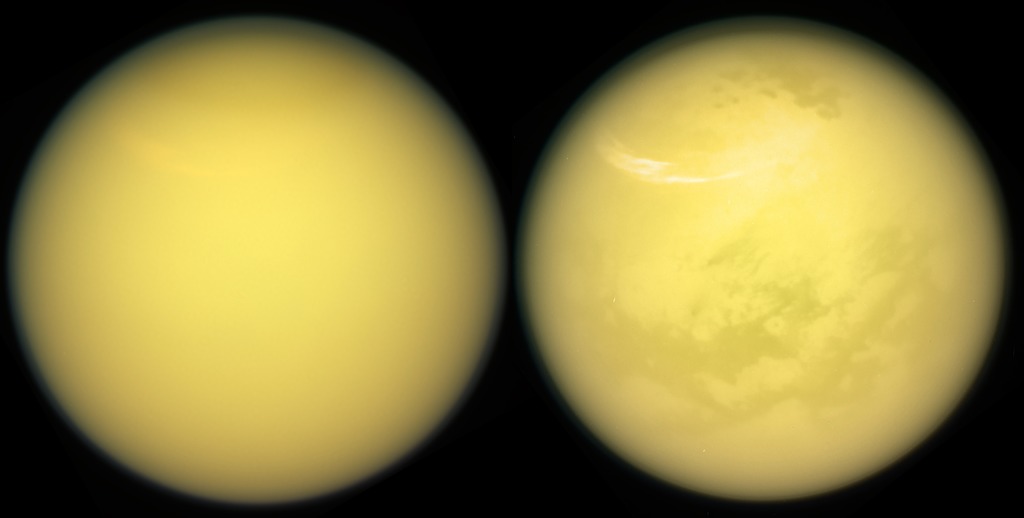Seeing Titan with Infrared Eyes

Six infrared views of Saturn's moon Titan.
These six infrared images of Saturn's moon Titan represent some of the clearest, most seamless-looking global views of the icy moon's surface produced so far. The views were created using 13 years of data acquired by the Visual and Infrared Mapping Spectrometer (VIMS) instrument on board NASA's Cassini spacecraft. The images are the result of a focused effort to smoothly combine data from the multitude of different observations VIMS made under a wide variety of lighting and viewing conditions over the course of Cassini's mission.
Any full color image is comprised of three color channels: red, green and blue. Each of the three color channels combined to create these views was produced using a ratio between the brightness of Titan's surface at two different wavelengths (1.59/1.27 microns [red], 2.03/1.27 microns [green] and 1.27/1.08 microns [blue]). This technique (called a "band-ratio" technique) reduces the prominence of seams, as well as emphasizing subtle spectral variations in the materials on Titan's surface. For example, the moon's equatorial dune fields appear a consistent brown color here. There are also bluish and purplish areas that may have different compositions from the other bright areas, and may be enriched in water ice.
For More Information
Credits
Please give credit for this item to:
NASA/JPL-Caltech/University of Nantes/University of Arizona
-
Technical support
Release date
This page was originally published on Friday, July 20, 2018.
This page was last updated on Wednesday, November 15, 2023 at 12:40 AM EST.
Missions
This visualization is related to the following missions:Datasets used in this visualization
-
Infrared [Cassini: VIMS]
ID: 1010The Visible and Infrared Mapping Spectrometer (VIMS) collected both light that is visible to humans and infrared light of slightly longer wavelengths. It separated the light into its various wavelengths so scientists could learn about the composition of materials from which the light is reflected or emitted.
This dataset can be found at: https://saturn.jpl.nasa.gov/visible-and-infrared-mapping-spectrometer/
See all pages that use this dataset
Note: While we identify the data sets used in these visualizations, we do not store any further details, nor the data sets themselves on our site.
